
Thursday, December 18, 2025 Paksha:Krishna Tithi:Chaturdashi
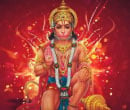
Friday, December 19, 2025 Paksha:Krishna Tithi:Amavasya
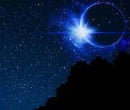
Friday, December 19, 2025 Paksha:Krishna Tithi:Amavasya
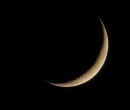
Sunday, December 21, 2025 Paksha:Shukla Tithi:Dvitiiya

Sunday, December 21, 2025 Paksha:Shukla Tithi:Dvitiiya

Wednesday, December 24, 2025 Paksha:Shukla Tithi:Chaturthi

Monday, December 1, 2025 Paksha:Shukla Tithi:Ekadashi

Monday, December 1, 2025 Paksha:Shukla Tithi:Ekadashi
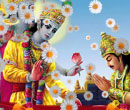
Monday, December 1, 2025 Paksha:Shukla Tithi:Ekadashi
Lohri 2026: Celebrated with great pomp and splendor, the Lohri festival comes on January 13th each year. The festival holds a lot of significance in the North-Western belt of the country, especially Punjab and Haryana. Dedicated to the god of fire, Agni Devta, this festival is celebrated in the auspicious months of Magh or Paush, as per the Hindu panchang.
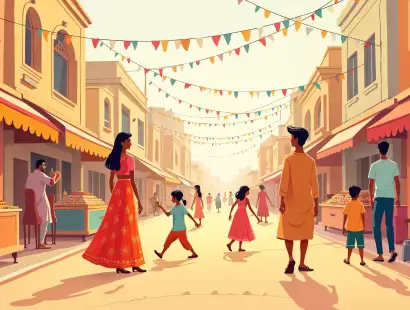


Pooja Vidhi and Its Significance
All About the Lohri Festival
The Lohri celebrations occur one day prior to Makar Sankranti. It marks the end of the cold winter of the Paush month. The festivities are organized on the day of the winter solstice, and from this day onwards, it is believed that the daylight hours begin to increase, indicating a new beginning of days filled with hope, happiness, and joy. This is a harvest festival that is celebrated with great vigor by the Sikhs and Punjabi communities of the country. Starting early, the Lohri celebrations begin in the morning, but the festivities reach their peak at night. Let us dwell deeper into the exuberance that surrounds this auspicious day:
Significance of Lohri
The history behind the Lohri significance is unclear as there are many different tales claiming to explain the origin of this propitious festival. However, most of the accounts share that the festival seems to have been first celebrated in the mountainous regions of the Himalayan range. The biting cold of this region is indeed more wintry than the rest of the country. As a result, after the Rabi crop of the season is harvested, people gather around bonfires and bid adieu to the winter solstice. This period marks the beginning of the spring season, heralding a time of fruitfulness and prosperity in everyone's life.
Since this festival is dedicated to the Sun god, Surya, people pray for the Sun to bring back warmth and sunshine in their lives after a period of chilly winters. Furthermore, this festival initiates the new financial year for the farmers of the country as per the Bikrami calendar. After the harvest, rent is collected on the day of this festival, hence marking the starting point of the new financial year.
How is the Lohri Festival Celebrated?
The festival is celebrated with a spectacle as it stands for the aspect of fertility in life. Everybody gathers around a bonfire and throws popcorn, puffed rice, sweets, and more made out of the new crop into the burning flames.
Rituals Performed on Lohri
Many different rituals are performed while celebrating the festival of Lohri. Let us take a look at some of the major rituals associated with the festivities:
The morning starts with the children in the neighborhood dressing up in new clothes and singing songs heralding the praises of Dulla Bhatti or Punjab's 'Robin Hood'.
They visit the homes of their near and dear ones where people offer them sweets and gifts. This is referred to as the Lohri loot.
Everybody gets together to sing popular Punjabi songs like:
Sundar mundariye ho Tera kaun vichara ho! Dulla Bhatti wala ho! Dulle di dhee vyaayi ho! Ser shakkar paiyi ho! Kuddi da laal paatka ho! Kuddi da saalu paata ho! Saalu kaun samete? Chaacha gali dese! Chaacha choori kutti! Zamindara lutti! Zamindaar sudhaaye! Bam Bam Bhole aaye! Ik Bhola reh gaya! Sipahi door ke lai gaya! Sipahi ne maari itt! Paanve ro te paanve pitt! Saanu de de Lohri, te teri jeeve jodi! (Hanso, royo ya chillaao!)
With the sun setting in the evening, massive bonfires are built in the newly harvested fields or community areas.
As soon as people gather around the bonfire, it is set alight as the celebrations begin.
People walk around the bonfire offering revari, sweets, peanuts, and popcorn to the auspicious fire while dancing to the beats of the dhol.
"Aadar aaye, dilather jaaye," meaning may honor come and poverty disappears from our homes, is chanted with great enthusiasm.
After offering the prayers to the fire god for an abundant crop season, the prasad of popcorn, gajak, and peanuts is distributed.
Newly harvested sugarcane is pitched into the burning fire as the sweet aroma fills the atmosphere, adding more pleasantness to the festivities.
Regional Names of Lohri
This festival is celebrated not just in Punjab and Haryana but also in the rest of the country. However, the celebrations take different forms and nomenclature. There are many different regional names for the harvest festival. Let us see what Lohri in Punjabi, is called in other parts of India:
Pongal in South India
Bhodi in Andhra Pradesh
Bhugali Bihu in Assam
Uttarayan in Gujarat
Makar Sankranti in Central India
The names might differ, but the spirit of the festival remains the same as people get together to rejoice at the end of the harvesting season and welcome the spring after an icy winter.
Astrological Benefits of Celebrating Lohri
The celebrations surrounding this festival have a deep astrological significance apart from being a way to celebrate the end of the harvest season. Here are the most prominent reasons according to astrology for celebrating this festival:
During the Lohri 2026 date, the Earth will be leaning towards the Sun. Each year, during this time, the Earth's axis is inclined towards the Sun along the Makar Rekha or the Tropic of Capricorn.
This event takes place on the day after Lohri and is also referred to as the winter solstice.
The Earth is known to be farthest from the star of our galaxy, i.e., the Sun at this time.
This also marks the onset of the spring season as the Earth begins its elliptical journey around the Sun from this day.
This transition of seasons brought about by Earth's axis change around the Sun is celebrated as the festival of harvest.
Legends Associated with Lohri:
Behind the celebrations of this renowned festival, the Lohri story is extremely popular. The tale of the famous Dulla Bhatti is known far and wide. He was a local hero who is endearingly referred to as the 'Robin Hood of Punjab.' During the reign of the Mughal emperor Akbar, he was the savior of the local communities, saving people from slavery and injustice. His acts of bravery have turned into legends, becoming an important part of the folklore. His courageous actions are celebrated through folk songs and dances on this auspicious day to honor his memory.
People get together on this opportune day to celebrate a joyous and happy Lohri by dancing to their hearts fill and welcoming the warmth of the approaching spring. On this day, they pray for a prosperous new beginning and new year!
If you wish to know more about this occasion, get connected with Astroyogi astrologers right away!
Festival List
- Nag Panchami
- Raksha Bandhan
- Janmashtami
- Ganesh Chaturthi
- Onam
- Pitru Paksha
- Shardiya Navratri
- Durga Puja
- Dussehra
- Karwa Chauth
- Dhanteras
- Diwali
- Govardhan Puja
- Bhai Dooj
- Chhath Puja
- Tulsi Vivah
- Guru Nanak Jayanti
- Christmas
- New year
- Lohri
- Pongal
- Makar Sankranti
- Vasant Panchami
- Shivratri
- Ramadan
- Holi
- Good Friday
- Navratri
- Gudi Padwa
- Ugadi
- Vaisakhi
- Ram Navami
- Mahavir Jayanti
- Hanuman Jayanati
- Buddha Purnima
- Akshay Tritiya
- Shani Jayanti
- Guru Purnima
- Hariyali Teej


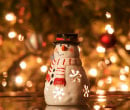






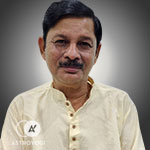







 Team Astroyogi | Wed, Dec 17, 2025
Team Astroyogi | Wed, Dec 17, 2025





